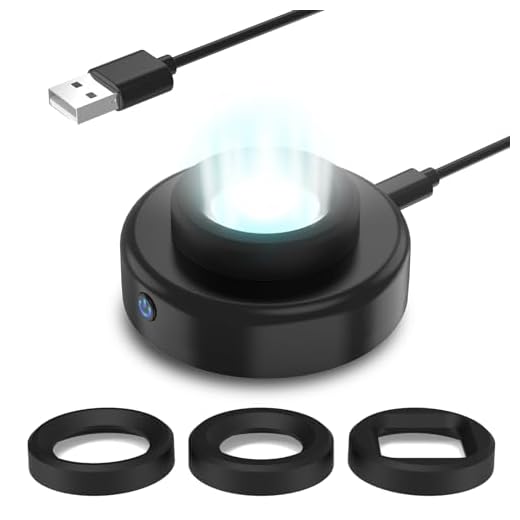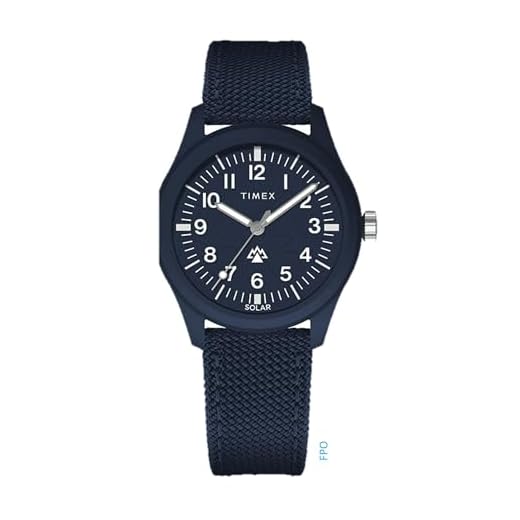Sunlight and Time: How Watches Tap Solar Power
Sunlight can power a watch for months — sometimes indefinitely — with the right solar materials. Perovskite solar cells are exceptional at capturing light: they absorb more sunlight in thinner films than traditional silicon, work on flexible substrates, and promise much lower manufacturing costs. That combination makes them a compelling candidate for wearable solar.
This article explains how perovskite materials convert ambient light into usable battery life in watches. We’ll cover device physics, mechanical and environmental constraints of watch design, charging behavior and power management, real-world testing and degradation, and safety and sustainability. Read on to learn what users can expect from perovskite-powered timepieces. Innovations could soon make these watches commonplace on many wrists.




How a Solar Watch Actually Works: The Power Behind Your Timepiece
What Perovskite Materials Are and Why They Matter for Wearable Solar
What “perovskite” means in photovoltaics
In solar research, “perovskite” refers to a class of materials that share the ABX3 crystal structure: A is a large cation (methylammonium, formamidinium, or cesium), B is a metal (commonly lead or tin), and X is a halide (iodide, bromide, chloride). Lab cells combining these components have jumped to >25% efficiency on small-area devices, driven by exceptionally high absorption coefficients and favorable charge transport.
Why perovskites suit watches
Perovskites absorb visible light much more strongly than silicon, so usable devices can be made at micrometer or sub-micrometer thicknesses—ideal for thin, lightweight watch modules. Their bandgap is tunable by composition, allowing designers to balance peak efficiency, partial transparency, or even colored faces that still harvest light. Low-temperature, solution-based processes (spin coating, slot-die, inkjet printing) enable flexible substrates like PET or thin metal foils, opening possibilities for curved or integrated dial solar layers.
Limitations that shape watch design
Real-world use exposes weaknesses: many perovskites are hygroscopic and degrade with moisture; they can suffer from heat- and light-driven ion migration and photochemical breakdown; and high-performance recipes often contain lead. Those factors force heavy emphasis on encapsulation, barrier films, and thermal management in a wrist-worn device.
Practical tips for designers and buyers
These properties explain why perovskites are exciting for wearable solar—but also why engineering choices matter from the first coating to the final seal.
How Perovskite Solar Cells Turn Light into Electricity
Photons, excitations, and charge collection
When a photon hits the perovskite layer, its energy can lift an electron into a higher energy state, leaving behind a positively charged “hole.” Depending on composition, the material may produce free electrons and holes directly or bound excitons that quickly separate. The key is to get those charges to opposite electrodes before they recombine—every lost carrier lowers current and voltage.
Common small-area architectures
Small, planar cells used in wearables typically use one of two stacks:
p–i–n often shows better compatibility with low-temperature, flexible substrates and can be more stable in practical devices.
Role of transport layers and interfaces
Selective contacts (e.g., PCBM, TiO2, NiOx, Spiro-OMeTAD or PTAA) shepherd electrons and holes to the right electrode while blocking the opposite charge. Interfaces are where most recombination happens; chemical passivation (molecules that fill surface defects) raises open-circuit voltage (Voc) and boosts fill factor (FF). Poor contacts increase series resistance or shunts, reducing FF and short-circuit current (Jsc).
From cell parameters to usable power
Because perovskites have very high absorption coefficients and long carrier diffusion lengths, even micrometer-thick films generate substantial Jsc under dim indoor lighting. Their tunable bandgap (roughly 1.2–2.0 eV) lets designers optimize for sunlight (∼1.5–1.6 eV) or LED-heavy indoor spectra (higher bandgap gives better response to blue-rich light).
Practical tips for wearable designers
Engineering a Watch: Mechanical and Environmental Constraints
Form-factor and aesthetic trade-offs
Wristwatches offer only a few square centimeters of real estate, often curved, domed, or interrupted by hands and subdials. Designers must balance maximizing active cell area with preserving legibility and style. Options include ring-shaped or segmented cells around the dial, semi‑transparent cells beneath printed indices, or tiny tile arrays hidden under the chapter ring. Color tuning (via halide mixing or optical filters) can match a brand’s palette, but more saturated perovskite compositions can be less stable.
This is where existing solar models offer useful cues. The Timex Expedition Scout Solar 40mm Leather Strap shows how a classic dial can integrate visible solar elements without feeling “gadgety.”
Mechanical robustness: bending, shocks, and wear
Perovskite modules for watches must tolerate repeated flex and occasional impacts. Use flexible substrates (polyimide) for curved dials and add a thin glass or sapphire top for scratch resistance. Mechanical decoupling—soft adhesive layers or micro‑gaskets—reduces stress transfer from crystal impacts. Designers should plan for redundant wiring: multiple small cells in parallel keep a watch running if one tile fractures.
Environmental sealing and coatings
Wrist exposure means sweat, salt, humidity, and temperature swings. Robust edge sealing with metalized barrier films, thin ALD oxide layers, or laminated glass is essential. Hydrophobic and UV‑stable coatings protect against sweat and yellowing; an internal desiccant pocket prolongs lifetime. Active perovskite chemistries require oxygen/moisture prevention—industry‑grade encapsulation is non‑negotiable.
Placement, orientation, and array strategies
Decide early whether to use a single module for maximum efficiency or many small tiles for redundancy and shape conformity. Small arrays simplify routing around hands and subdials but raise connection losses; a single module is simpler electrically but harder to shape. Tip: prioritize peripheral mounting where incident angles are favorable when the wrist is relaxed.
Practical, immediate tips
Next we’ll look at how those engineering choices affect charging behavior and power management.
Charging Behavior and Power Management in Perovskite-Powered Watches
From cell output to usable energy
Perovskite cells on a watch dial produce a wide range of currents depending on illumination and area: expect tens–hundreds of microamps (μA) from a few cm² under bright indoor light, and low‑milliamp (mA) currents in direct sun. Those raw currents must be conditioned — voltage-matched, regulated, and stored — before they can extend battery life.
Power conditioning and charge management
Key hardware stages:
Practical tips:
Software strategies to stretch charge
Firmware can multiply usefulness of limited energy:
Example energy budgets
Next we’ll examine how these strategies fare over time under real‑world testing and degradation.
Testing, Degradation, and Real-World Performance
How modules are tested
Engineers use a mix of standardized and watch-specific protocols to predict field behavior. Typical bench tests include calibrated light‑source runs that mimic indoor lux levels (office 300–1,000 lx, bright indoor ~1,000 lx, window/balcony ~10,000 lx) and outdoor irradiance (AM1.5, ~1000 W/m²). Accelerated‑aging suites combine damp‑heat (high humidity + temperature), thermal cycling across expected wear ranges, and long continuous illumination to expose slow failure modes and interface breakdowns.
Common degradation mechanisms and mitigations
Key failure drivers for perovskites in watches:
Practical countermeasures:
What tests mean for everyday users
Translating lab numbers into habits and expectations:
Next up: weighing the environmental and safety tradeoffs of perovskite materials and where the technology is headed.
Safety, Environmental Impact, and Future Directions
Toxicity, containment, and regulation
Many high‑efficiency perovskites use lead; that raises obvious concerns for watches that contact skin and can be discarded. Manufacturers mitigate risk with multi‑layer encapsulation, chemically binding lead in insoluble phases, and designing sealed modules that survive scratches and impacts. Regulatory steps and third‑party testing (RoHS compliance, IEC durability suites) are becoming standard.
Practical tips for consumers:
Lifecycle impacts vs batteries and silicon
Perovskite-enabled harvesting can reduce the frequency of battery replacements — a tangible environmental win compared with disposable button cells. Compared to silicon solar patches, perovskites promise similar or higher energy per area and lower embodied‑energy manufacturing, but long‑term durability still lags. A realistic lifecycle view weighs fewer battery swaps against potential module replacement, so device take‑back, responsible end‑of‑life processing, and small‑scale recycling are key.
Actionable steps for brands:
Technological advances shaping next‑gen watches
Likely near‑term improvements:
Commercialization hurdles and pathways
Barriers: long‑term reliability data, consumer trust around toxicity, scalable encapsulation, and cost parity. Pathways: certified demo fleets, visible recycling programs, incremental hybrid products (solar backup modes), and partnerships with experienced watchmakers to marry aesthetics with robust module integration.
With these frontiers and safeguards in place, the industry is positioned to move from lab promise to everyday sun‑powered wristwear — setting up the final takeaways in the Conclusion.
From Sunlight to Seconds: What to Expect
Perovskite films can convert ambient light into usable watch energy by combining high‑absorption thin layers, tailored device engineering, and smart power management. Lightweight, efficient, and adaptable modules promise extended autonomy for many wearables while shrinking reliance on wired charging.
Challenges remain — long‑term stability, safe materials handling, and integration complexity — but ongoing materials and system innovations are closing gaps. Expect practical perovskite-powered watches in niche then mainstream use as reliability and sustainability improve soon.





Nice technical write-up. A constructive note: the “Testing, Degradation, and Real-World Performance” bit could use more raw numbers and test protocols. Are they using damp heat (85°C/85% RH) tests or outdoor field trials? That matters for consumer expectations.
Good catch. The article mentions both damp heat and outdoor field trials but didn’t list all protocols — we’ll add a separate methods appendix with specifics in the next update.
Agree with Ethan. Also include sample size — one prototype surviving is not enough to claim durability.
Okay wow — this is legitimately exciting. A couple of wild thoughts:
– If Perovskite becomes cheap and durable, could we see solar bezels on smartwatches to extend battery life for GPS modes like on the Garmin Instinct 2X Solar?
– Also, eco angle: Traprock and other ‘eco’ brands might get a sustainability boost, but what about recycling perovskite materials?
Lots of potential, but I’m cautiously optimistic. 😄
Would love to see a consumer product that tells you how much daily charge you got from sunlight — like a tiny solar log. Make it pretty and I’m sold. 😅
A solar log would be cool. Maybe integrate with Garmin Connect? They already do a lot of health/activity stats.
Recycling will be tricky because perovskites often use lead. Even small quantities complicate end-of-life handling.
If perovskite does reduce the need for heavy batteries, watches can get lighter. Count me in.
Just hoping it doesn’t mean a $700 premium for the tiny perk of ‘never change battery again.’
You’re spot on about bezels — integrating cells into non-intrusive surfaces is a likely path. The article’s environmental section mentions recycling protocols being developed, but it’s an open area.
This was a fascinating read — I never imagined perovskite could be shoehorned into something as tiny as a watch. A few thoughts:
1) The section on “How Perovskite Solar Cells Turn Light into Electricity” made the basic physics approachable.
2) I’m curious about real-world testing — how does a Traprock or Timex Expedition fare after a year in partial shade?
3) Also, lol at the idea of a watch charging itself during meetings 🫠 (please don’t rely on that)
Great overview overall, but would love more long-term degradation numbers.
I’ve got a Timex Expedition Scout Solar — been using it for 2 years and the battery still holds fine, but I live in a sunny place. Humidity will probably wreck perovskites faster than regular silicon panels.
Totally agree on the degradation question. Accelerated tests are helpful but often don’t capture UV + sweat effects for straps and seals.
Thanks Laura — glad it was useful. The article’s testing section cites accelerated lifetime tests (1000+ hours) but real-world wear can vary a lot with humidity and temperature swings. We’ll try to include a table of expected calendar degradation in a follow-up.
Nice piece. Quick question: the ‘Charging Behavior and Power Management’ section — are there examples of watch OSes already optimized for tiny, intermittent solar inputs? Like adaptive polling of GPS when solar input is good?
Great question. Some watch firmware (Garmin’s solar modes, for example) scales back background tasks and adjusts sampling based on charge state. More sophisticated adaptive strategies — reducing sensor sampling when solar input drops — are an active development area.
Would love to see OS-level solar budgeting APIs for third-party apps. Right now app devs assume a stable battery.
Agreed — app ecosystems need to be solar-aware. Otherwise a background fitness app can drain the trickle charge.
Skeptical here — perovskites sound great on paper, but I’ve seen too many ‘next big things’ fizzle because of stability. Can a Garmin Instinct-style rugged watch honestly use perovskite without frequent servicing?
Loved the comparison to existing products (Casio G-Shock, Garmin Instincts). Quick take:
– If perovskite can be integrated into display glass or bezel, that’s a game changer for hiking watches.
– But waterproofing and shock resistance are non-negotiable for outdoorsy folks.
Anyone else worried about the “engineering constraints” part? I appreciate the deep dive though!
Also, the article’s note about using small power banks (like the 42800mAh rugged chargers) for overnight trips is practical — perovskite won’t replace larger backup packs anytime soon.
Good point, Tara. The article highlights encapsulation strategies (thin glass + polymer barriers) that help with both moisture and impact, but they do add complexity and cost.
Don’t forget the power management section — even a small current can keep a low-power digital watch alive for months.
Encapsulation helps, but thermal cycling is a killer. If the watch goes from cold morning to hot afternoon, the different expansion rates can crack thin films.
I want a Traprock 40mm Eco Solar that actually charges from indoor light. If perovskite improves low-light sensitivity, sign me up. ☀️
I appreciated the ‘Safety, Environmental Impact, and Future Directions’ section. Two quick points:
– If perovskite uses lead, we need strict take-back programs.
– I’d love more on lifecycle comparisons: Traprock and Timex vs. new perovskite-integrated models.
Not angry about tech, just want responsible rollout.
Right — you often sacrifice efficiency for stability and non-toxicity. But even moderate-efficiency, safe materials could be better overall.
As long as it’s better than disposable watch batteries in landfills, I’m on board.
Lead-free perovskites sound promising but I’ve read they often underperform. Trade-offs everywhere…
Absolutely — responsible sourcing and take-back are central to adoption. The article flags lead concern and mentions lead-free perovskite research as an active area.
Great article. Two practical questions for anyone who has tried perovskite or similar solar watches:
– Does an ECEEN LED Solar Watch Charger actually help if your watch has perovskite cells, or is it redundant?
– And for long trips, is the 42800mAh Solar Power Bank overkill for charging multiple devices + watch, or reasonably sized?
Trying to figure out what to pack for a 10-day backpacking trip.
Thanks!
Also pack a small ECEEN-style charger if you have multiple watches or batteries to top off — tiny and cheap insurance.
I took a 20k mAh bank backpacking once and regretted the weight. If your watch is efficient and you’re okay with power-saving GPS modes, skip the huge bank.
If you want redundancy, a small 10k mAh + a solar charger mat (compact) is nicer than lugging a 42k brick.
For backpacking: the 42800mAh power bank is heavy but will recharge phones and watches multiple times — it’s overkill if you only need watch top-ups. ECEEN-type chargers can help with watches that lack integrated cells or when you need a quick boost, but if your watch has efficient perovskite cells you may rarely need them.
Don’t forget a cable organizer. The power is useless if you spend 30 minutes untangling cords at camp 😂
Short and practical: if you’re planning to use an ECEEN LED Solar Watch Charger with Caps or any external charger, check compatibility — not all watch backs are clip-friendly. I learned that the hard way.
Good tip — the article mentions chargers like ECEEN and power banks, but you’re right that mechanical fit matters. We’ll add a compatibility checklist for common watch backs.
Five quick lines because I can’t stop thinking about this:
1) What about pairing perovskite bezels with the Garmin Instinct 3 to get multi-day GPS without a big battery?
2) Would a Timex Expedition Scout Solar benefit much, or is that overkill?
3) How durable are these panels vs. regular solar cells?
4) Could we see third-party ECEEN-type chargers made specifically for perovskite watches?
5) I need this tech tbh.
I’m in Seattle. Cloudy 9 months a year. Sorry, but ‘solar’ watches still sound like a marketing flex here. 😆
Casio G-Shock Tough Solar works decently, but it still needs sunlight exposure. Perovskite’s low-light performance would be the killer feature for me.
Seattle folks are a good litmus test for low-light performance. The article covers indoor and diffuse-light efficiency improvements with perovskite, but field data in high-latitude/cloudy locations is limited.
Agree — if perovskite can harvest well under overcast or office lighting, that’s when it becomes genuinely useful for people in cities.